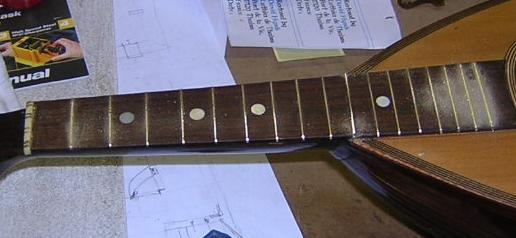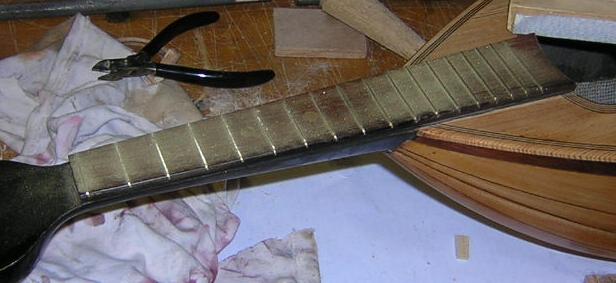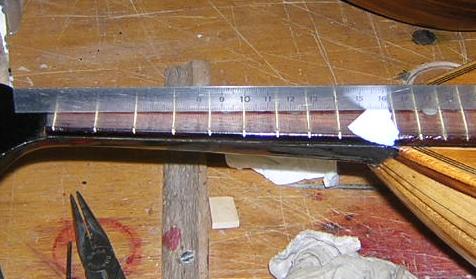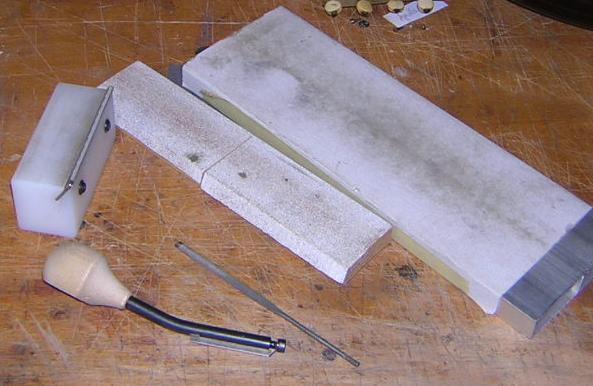|
Levelling or Re-levelling frets |
|
 |
Often necessary to remove
small dips, the odd high fret, after a re-fret, or to level after
fingerboards have been set on a shim.
In this example, it is obvious that the high frets are not only at either end. It will often be the case, that you find a mandolin with only a slight bow in the neck. In this case it is sometimes possible to relevel the frets and thereby erase the dip. It is essential that you start with sufficient depth to the frets to work with. |
 |
First I remove the nut. Afterwards, I use sandpaper stuck to a block of wood with a FLAT bottom surface, as a sanding block. The block is about as long as the fingerboard. When you begin, you will only touch the highest frets, here typically at either end of the fretboard. |
 |
I have found used 80 grade sandpaper works
quite well and quite quickly, without ripping the frets to pieces. If the fretboard is very
thin where it overlaps the table, I would normally tape up the top
either side of the board to protect it.
Gradually, as the frets are levelled, the brass dust will spread to more of the frets. |
 |
Once the dust has spread to all the frets, I
stop and change briefly to a finer grade paper (120) to finish off. The
tops of the frets will now be flat. They need to be dressed without lowering
the height. The tops of the frets must be rounded, so the the strings are
stopped at one point only. This can be done with needle files, but is difficult and time consuming. The best tool is a fret file, available from
StewMac.
The ends must be dressed. A dressing block saves endless time, and gives you a good standard finish. But even with the block, it is necessary to round off edges with a needle file to finish. |
 |
I usually finish by laying a steel rule along the fret tops, and trying to slide a piece of paper under it at any fret. You will often find the odd low fret like that, hidden by the spread of the dust from those around it. If it is just an isolated fret, I push a small wedge of something rigid under one end to lift it. A piece of very fine, old saw blade works well. |
 |
Here are the tools I use:
80 grade paper on a flat wooden sanding block and 120 paper on an alumimiun sanding block. An angled end file available again from StewMac for preliminary end-dressing. Fret file (with interchangeable files) with wooden handle, and a flat needle file. Fret levelling is easy to do badly. To do a good job, the right tools help enormously, and a good deal of time and patience. Even after it all looks perfect it is not unusual to find one or two low/high frets once the strings are on. |